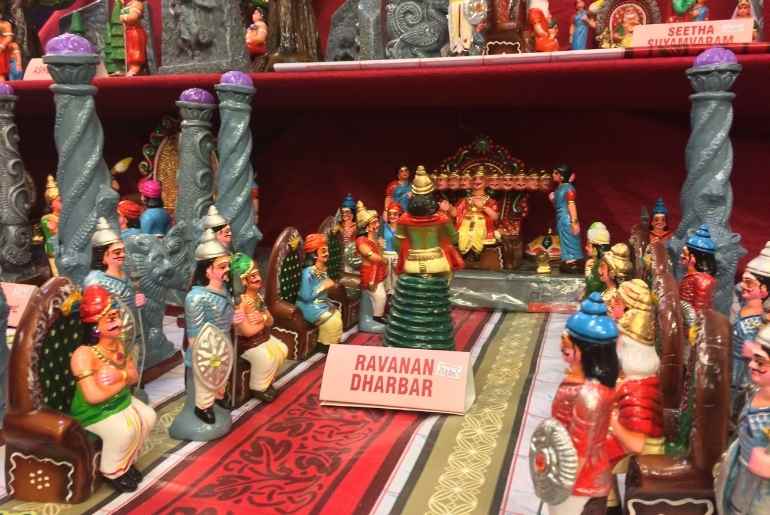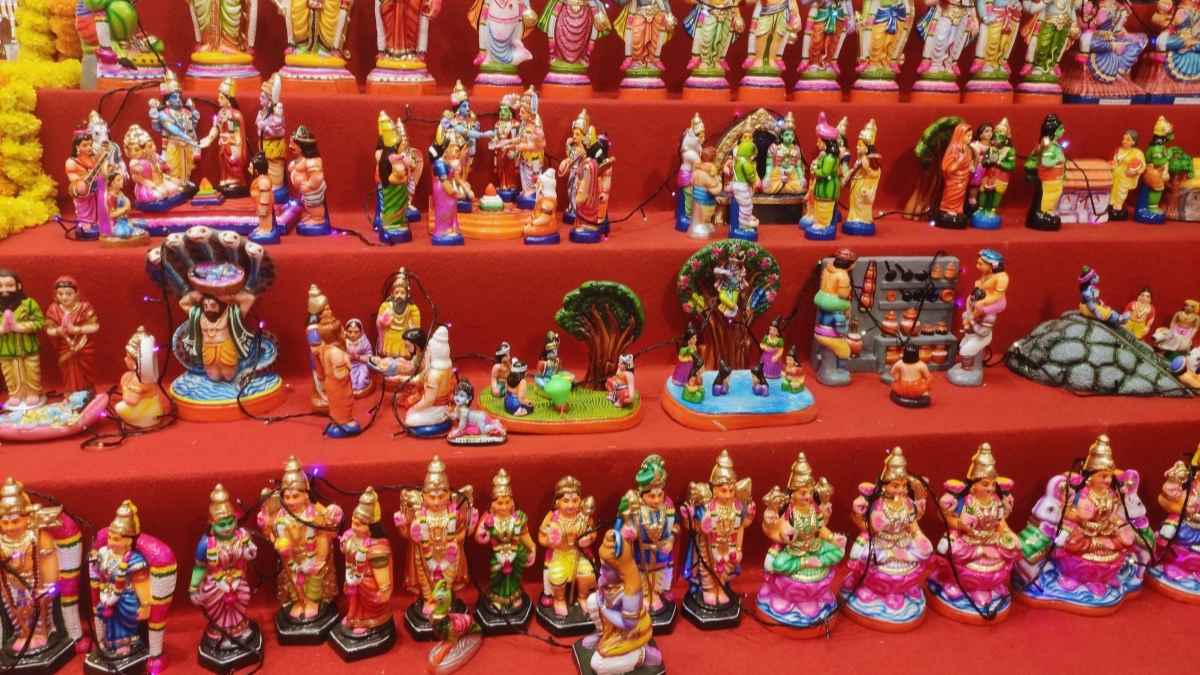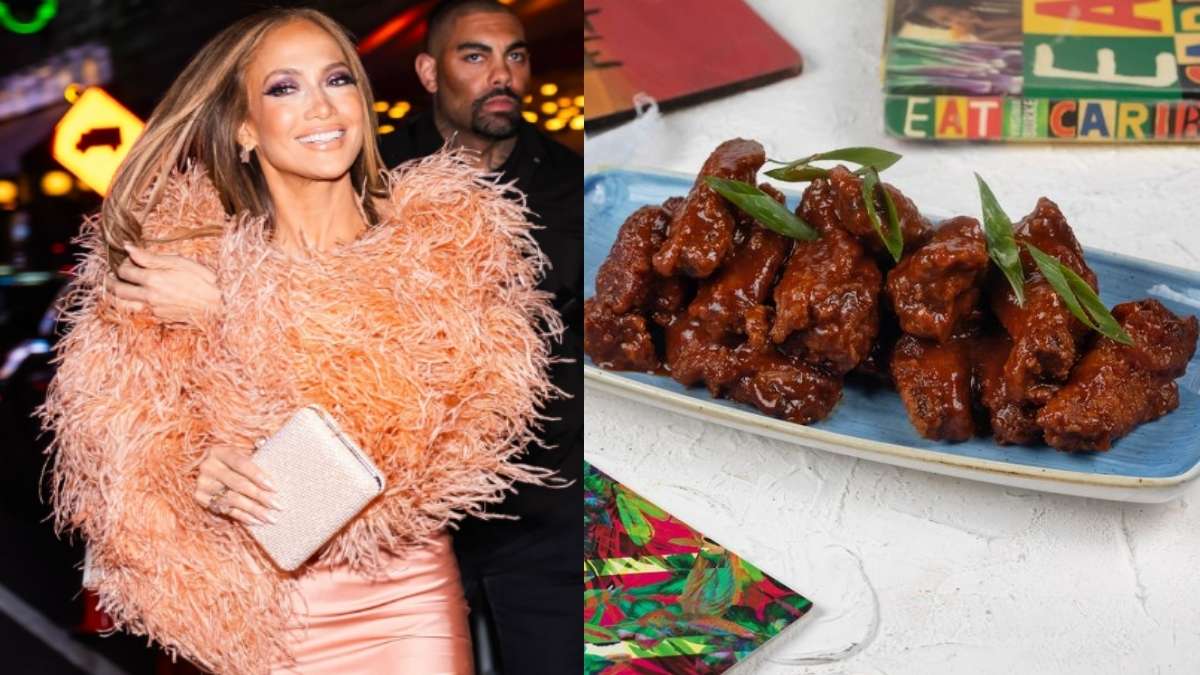North India celebrates Navratri (a festival spanning 9 days dedicated to the worship of Hindu Goddesses Lakshmi, Saraswati and Parvati) with vrat and puja. For the East, Navratri is about Durga Puja. And in the West, people immerse themselves in vibrant dances of garba and dandiya. But did you know South India has golu, a unique Navratri tradition of displaying dolls and figurines in one’s home?
What Is Golu?
Called Bommai Golu (Divine Presence) in Tamil Nadu, Bommala Koluvu (Court of Toys) in Telangana and Andhra Pradesh, and Bombe Habba (Doll Festival) in Karnataka— golu has many names but the essence remains the same. Golu is a South Indian festival where dolls and figurines, passed down generations, are beautifully displayed on a steps-like set-up.

The dolls and figurines predominantly made of clay depict characters and scenes from Hindu epics like Ramayana, Mahabharat, Dashavatara and the Puranas. And not just Gods and Goddesses, golu also involves placing dolls and toys representing everyday themes like current affairs, agriculture, family life and more.
The dolls are placed on multiple steps which represent the gopuram or temple gateway of a Dravidian temple. They are placed on odd number of steps, varying from one to eleven. it depends on the dolls kept on display. Many families place nine steps, where each step represents the nine days of Navratri. Every year, they keep one new doll or figurine which represents abundance.

These dolls are not just an exhibition of divinity, they are a medium of storytelling. As part of traditions, people visit each other’s homes to witness golus and exchange greetings and prasad.
Also Read: 6 Veg Dishes You Can Eat During Navratri If You Miss Non-Veg
What Is Its Significance?
The significance behind the beautiful display of dolls on a step-like structure goes back to the Navratri story of Goddess Durga defeating the buffalo-headed demon Mahishasura. When the demon king waged a war in heaven, he imprisoned all the Gods and Goddesses and created havoc on earth.

The Hindu trinity of Gods —Vishnu, Shiva and Brahma— took the help of their consorts— Goddesses Lakshmi, Parvati and Saraswati. With their combined strength and powers, Goddess Durga emerged. Riding a tiger, holding a trident in her hand, blessed with the powers and weapons of all other gods and goddesses, Goddess Durga went into battle.
After battling ferociously for 9 days on the 10th and final day, Goddess Durga emerged victorious and slayed the demon king, Mahishasura. However, all the other gods and goddesses turned into statues as they relinquished their powers to aid the Goddess.
Also Read: 8 Best Dishes To Ensure Calorie-Balanced Navratri Fasting
So, the Golu or the dolls displayed during Navratri is a humble ode to the selfless sacrifices of other gods and goddesses to ensure the victory of good over evil. It also symbolises the grand welcome of Goddess Durga or the divine into one’s home and heart.
Are you looking forward to visiting your South Indian friend’s home this Navratri to witness a beautiful golu display and be part of a rich and unique tradition?
Cover Image Courtesy: Canva
For more such snackable content, interesting discoveries and latest updates on food, travel and experiences in your city, download the Curly Tales App. Download HERE.
Good news! We are on WhatsApp! Subscribe to Curly Tales WhatsApp Channel to stay up-to-date with exclusive content and BTS. Join HERE.
First Published: October 16, 2023 5:43 PM



